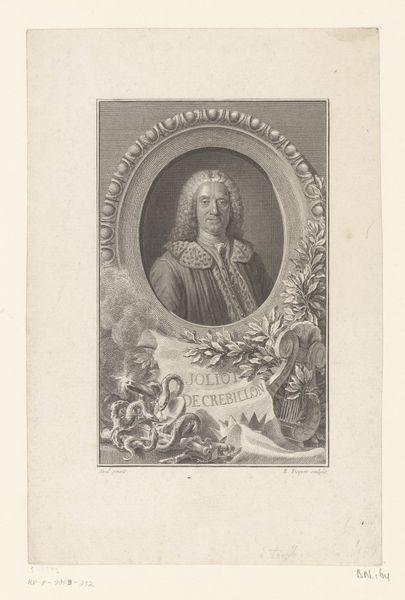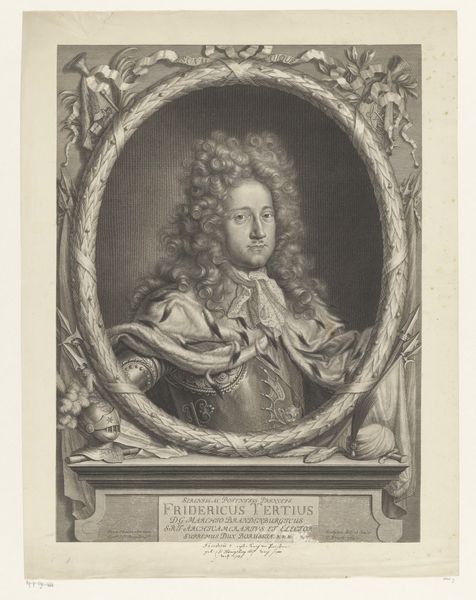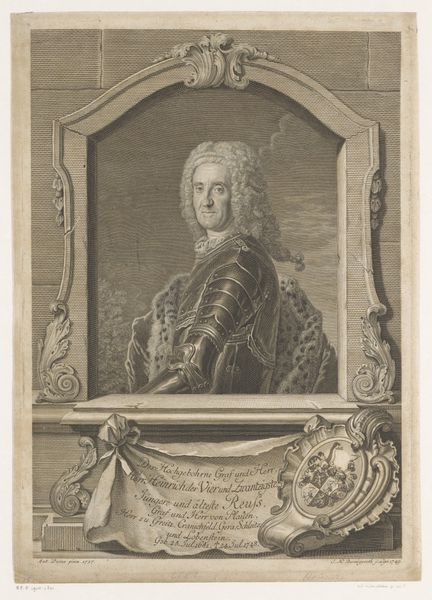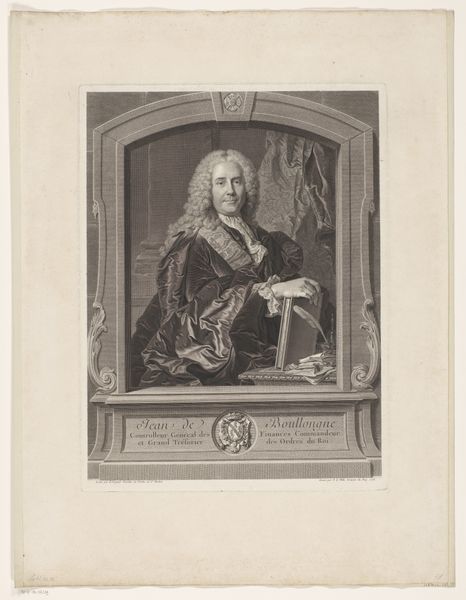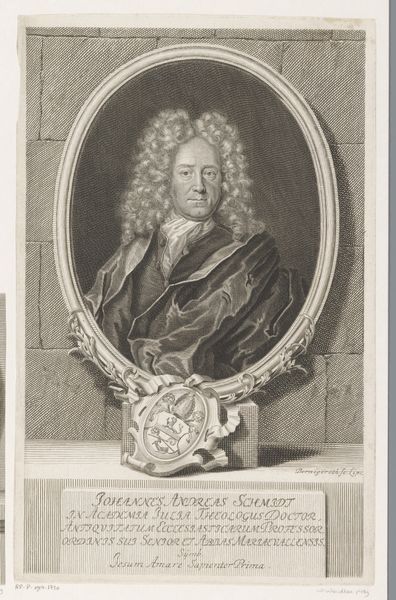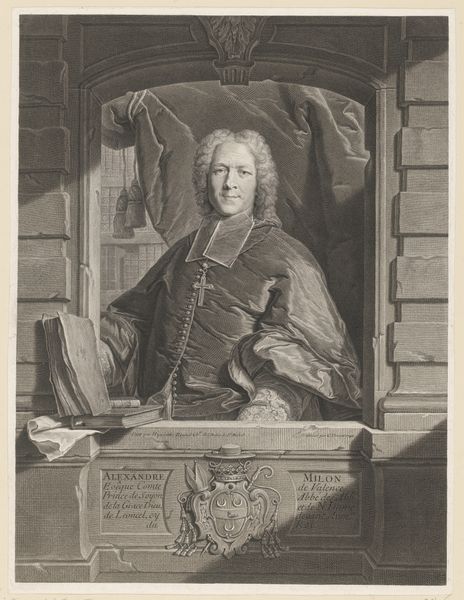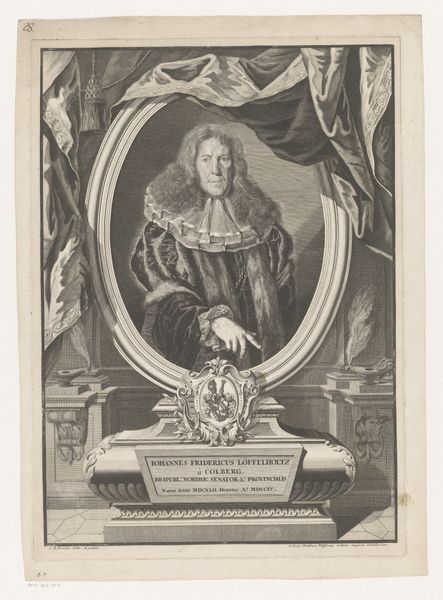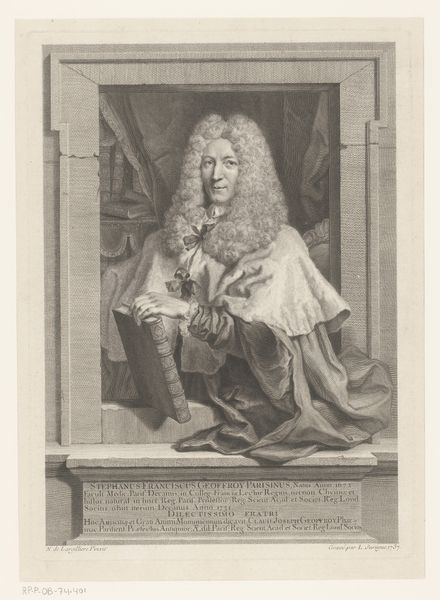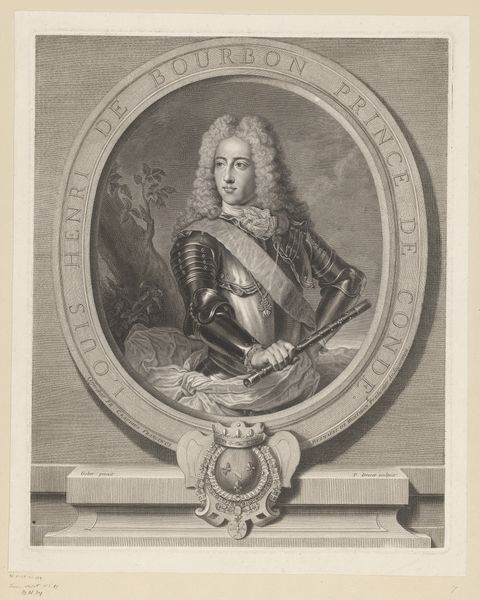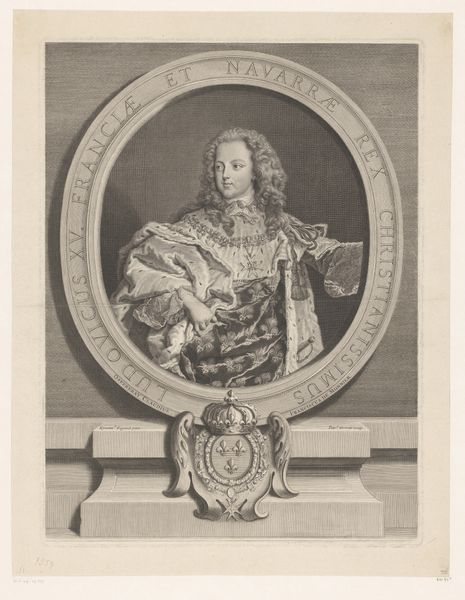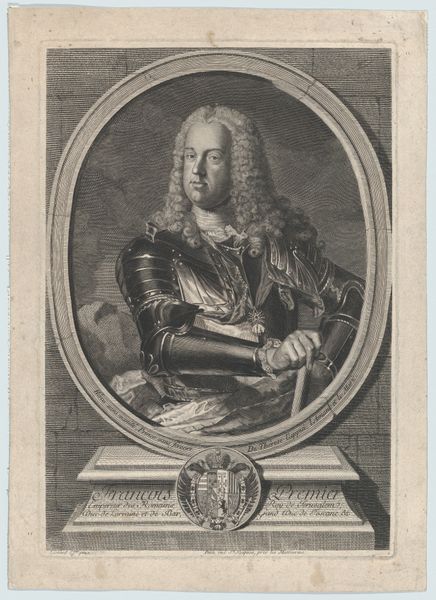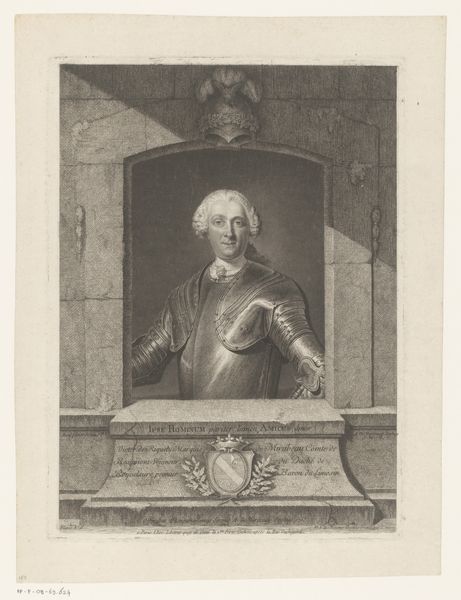
engraving
#
portrait
#
baroque
#
history-painting
#
engraving
#
realism
Dimensions: height 498 mm, width 360 mm
Copyright: Rijks Museum: Open Domain
Georg Friedrich Schmidt created this portrait of Jean-Baptiste Silva using engraving, a printmaking technique where lines are incised into a metal plate, which is then inked and pressed onto paper. Schmidt was a master of this painstaking process. Look closely, and you can see the incredible level of detail he achieved, from the intricate folds of Silva’s robe to the texture of his wig. The very act of engraving, with its reliance on precision and repetition, speaks to the values of the Enlightenment, a period that prized reason and order. But there's also a social dimension here. Engraving, unlike painting, allowed for the mass production of images. This meant that portraits of important figures like Silva, a physician to the King, could be widely disseminated, reinforcing his status and influence. In this way, Schmidt's skilled labor contributed to the construction of social hierarchies and the circulation of power. It reminds us that art is always intertwined with the wider world of labor, politics, and consumption.
Comments
No comments
Be the first to comment and join the conversation on the ultimate creative platform.

